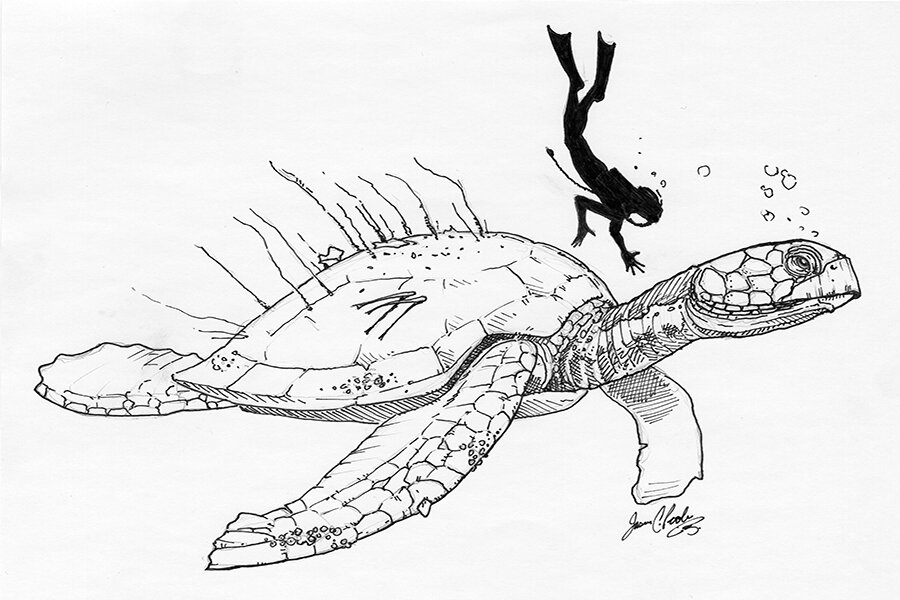Scientists reunite turtle fossils found at least 160 years apart
Loading...
When amateur paleontologist Gregory Harpel stumbled upon what he assumed to be a "rock at first", little did he know that he had actually discovered the missing piece of a fossil puzzle that had intrigued paleontologists since 1849.
The bone spotted by 54-year-old Harpel, whose weekend hobby is to search for fossil shark teeth, on a streambed in Monmouth County, N.J. was part of a humerus – the large upper "arm" bone of an ancient sea turtle. The bone was in good condition but broken at the midshaft.
At the time, Mr. Harpel didn't know that the rest of the turtle's humerus was sitting in the Academy of Natural Sciences of Drexel University in Philadelphia.
Nobody knows exactly how Drexel originally acquired the fossil counterpart to Harpel's discovery. "Unfortunately, things were not as well documented in those days," Ted Daeschler, associate curator of vertebrate zoology at the academy LiveScience.
The first scientific description of the old bone dates back to 1849 and was described by the famed naturalist Louis Agassiz as "the first, or type specimen, of its genus and species, Atlantochelys mortoni," according to a Drexel press release.
After Harpel found the piece in 2012, it did not take long for him to realize that the "rock" he was looking at is actually a significant fossil.
"Initially, I thought it was just a stream rock," Harpel told International Business Times. "The more I looked at it, it had a definitive shape to it."
Harpel showed the fossil to Jason Schein, assistant curator of natural history at the New Jersey State Museum and David Parris, the museum’s curator of natural history, who immediately recognized that the fossil was indeed a bone of a sea turtle.
The piece looked familiar to Parris.
"He said offhandedly, 'Maybe we ought to take it to the Academy [of Natural Sciences] and see if it fits," Mr. Schein told LiveScience reporter Wynne Parry, "Dave was half joking, thinking that could never, ever happen."
Why so? Because fossils when exposed to elements of weather will eventually break apart within a few months to a few years, says Dr. Daeschler.
Nevertheless, the piece was brought to Drexel for further examination.
"As soon as those two halves came together, like puzzle pieces, you knew it,” Daeschler says. "It was amazing."
Everything from the bones' color to the shape of break indicated that the two fossils were halves of the same bone.
Based on the overall size of the bones, scientists estimate that the sea turtle, which lived during the Cretaceous Period some 70 million to 75 million years ago, was about 10 feet from tip to tail, making it one of the largest known sea turtles ever.
The discovery challenges the conventional wisdom among scientists, who now believe that exposed fossils can survive for durations longer than what was previously thought.
“The astounding confluence of events that had to have happened for this to be true is just unbelievable, and probably completely unprecedented in paleontology,” said Schein in the press release.
They findings of the study will be published in 2014 issue of the Proceedings of the Academy of Natural Sciences of Philadelphia.








